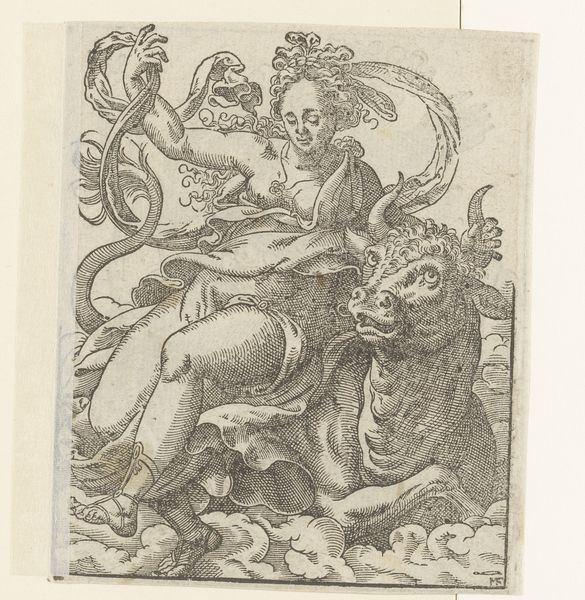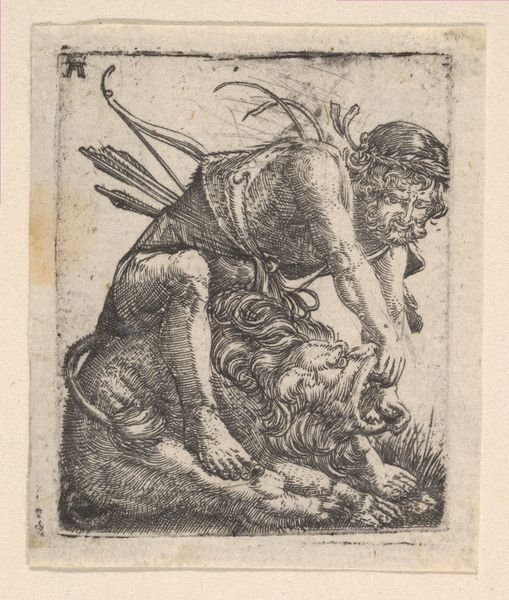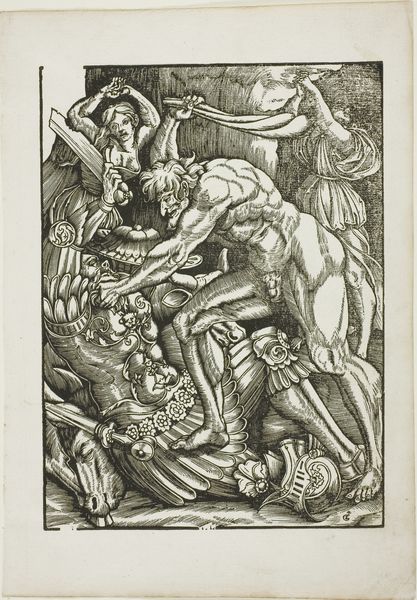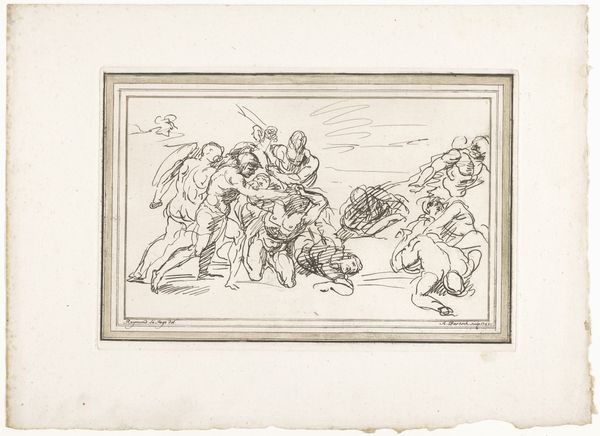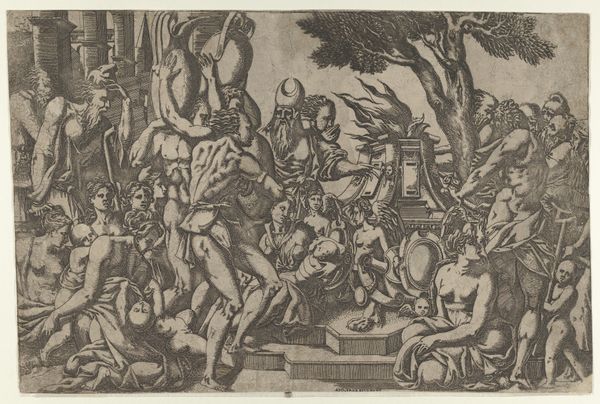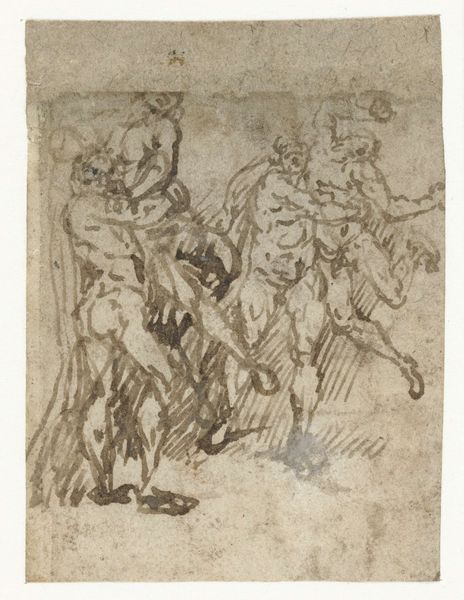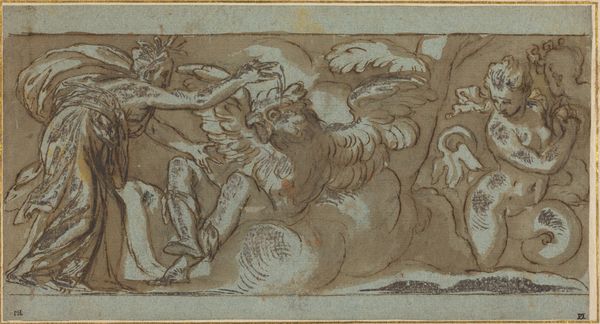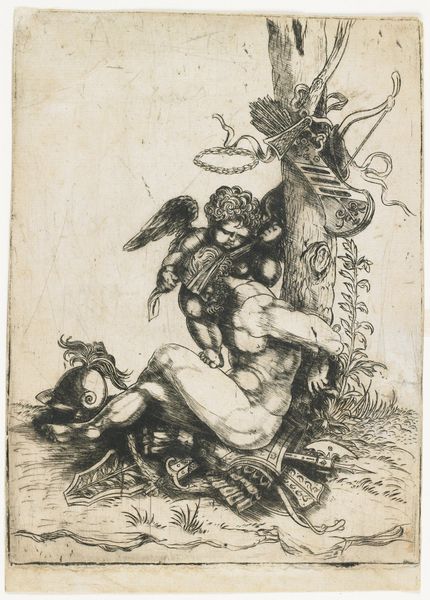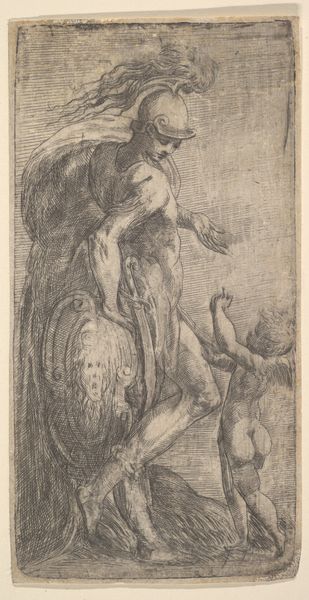
print, engraving
#
allegory
# print
#
mannerism
#
figuration
#
engraving
Dimensions: height 120 mm, width 98 mm
Copyright: Rijks Museum: Open Domain
Editor: So, here we have Ludwig Frig's "Personificatie van voorzichtigheid," an engraving from 1580. It strikes me as incredibly dynamic, with the figures almost seeming to tumble out of the frame. How do you interpret this work, especially considering the time it was made? Curator: This piece, with its Mannerist style, reflects a period of immense social and political upheaval. What we see as dynamism could also be read as anxiety, a precariousness mirrored in the figure clinging to the tree. The snake biting the arm of the other figure represents, perhaps, the dangers of unchecked ambition, a constant threat during the religious wars and power struggles of the late 16th century. The mirror, held aloft, speaks not just to vanity, as often interpreted, but to self-awareness and critical reflection in a world saturated with propaganda. What does this emphasis on allegorical figures tell us about the role of art in shaping public perception? Editor: That's a powerful reading. I hadn't considered the political implications so directly. The mirror as self-reflection in the face of propaganda – it's incredibly relevant even today. Curator: Exactly. And it’s essential to acknowledge that such allegories, while seemingly universal, often catered to specific social strata and perpetuated dominant ideologies. Who do you think had access to these prints, and what messages were being reinforced? Editor: Presumably, these prints were mostly for the educated elite. It makes you wonder how such imagery solidified class structures. I guess the reflection here prompts more self-awareness for me as well, in considering my position in relation to the artwork itself. Curator: Precisely! This artwork encourages a deeper consideration of historical power dynamics, especially questioning our role in perpetuating or challenging these systems today. Editor: I'm leaving this discussion with many new avenues to consider; it's fantastic to think of older art speaking directly to modern, ongoing concerns about power and social awareness.
Comments
No comments
Be the first to comment and join the conversation on the ultimate creative platform.
